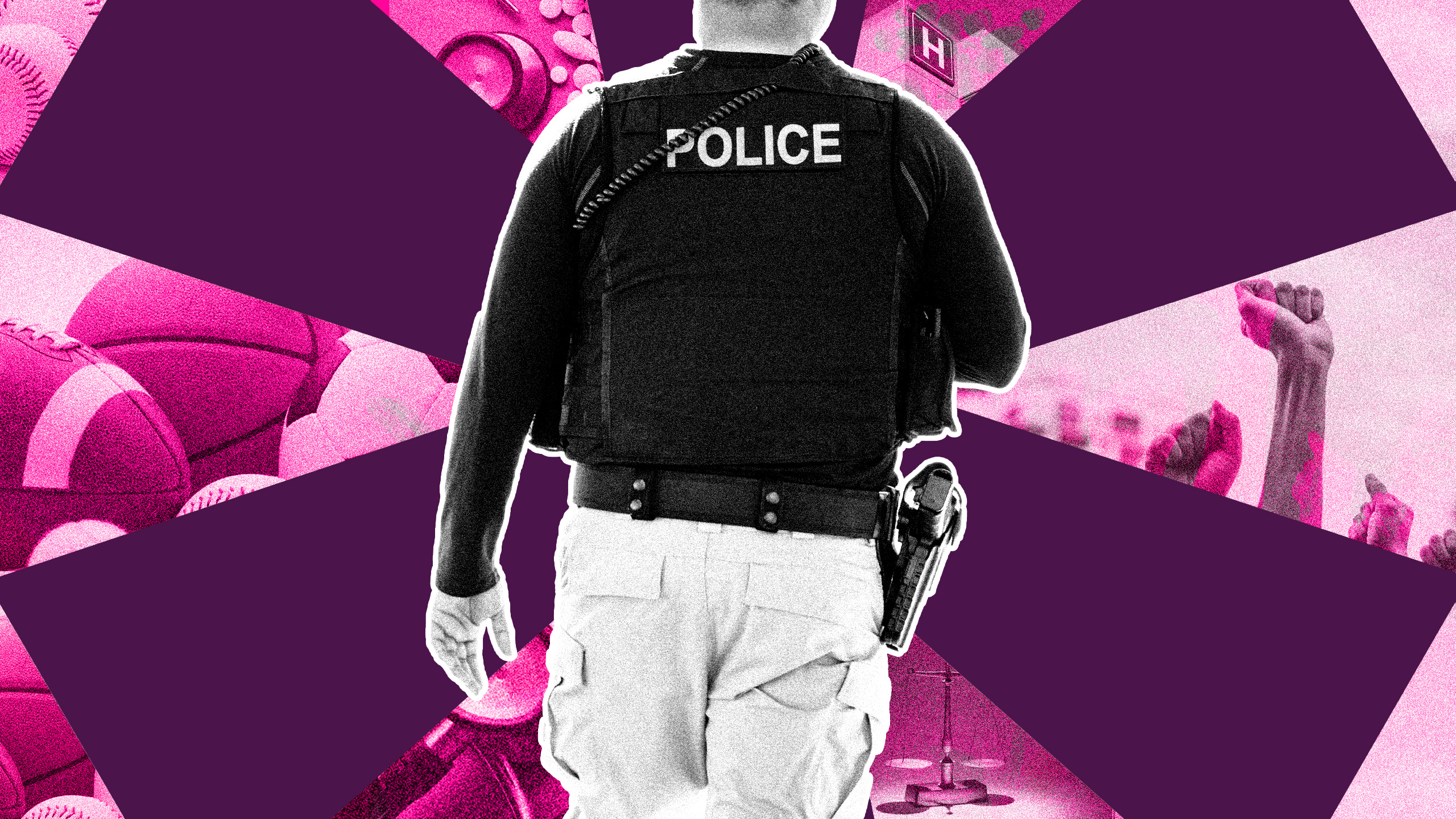When I was growing up, my parents always told me that when things go wrong, or I feel unsafe, I should find the nearest police officer for help. It’s a distinctly white American experience to be taught that police are supposed to be neighbourhood protectors. As I’ve grown up, I’ve realized the privilege that came along with that teaching.
Now as I enter my fourth decade and my second gender, I am realizing that not only are police not here to protect me, but they could be active participants in harming me and my queer friends. With a rising tide of violence and far-right protests of queer events throughout the U.S. and Canada over the last year or two, the list of examples of police ignoring or even enabling threats against queer people’s safety has only grown over time.
Dozens of drag shows and other queer public events have been cancelled this year over security concerns, from a shooting at a Colorado gay bar to persistent vandalism of a New York City drag venue. As incidences of anti-drag protests—some more violent than others— pile up, many are questioning how committed the police as an institution is to keeping LGBTQ2+ people and allies safe from transphobic bigots who show up to protest our spaces.
Two weekends ago, a school in Columbus, Ohio, was forced to cancel a fundraiser shortly after it started. The event was to feature a drag performance when armed far-right groups showed up to protest. School officials said they received a “casual, distant acknowledgement” from police of the security risks posed by far-right protesters.
A video of a Columbus officer high-fiving a Proud Boy member outside the event went viral. In a video released after the backlash, the on-duty officer explained that he wasn’t there to support the protesters’ cause—but he did support their right to protest. He said that a protester had complimented his mustache, which prompted the high-five.
In North Carolina that same weekend, a drag show was cut off midway through after someone shot at a local power station, damaging the equipment in what is believed to have been a targeted attack. The attack subsequently cut off power for 40,000 residents. Police are still investigating, and many have been critical of their handling of the case so far. A local woman, who had previously expressed homophobic and anti-drag opinions on social media—and who has been accused of bringing people to the January 6 insurrection—claimed she knew why the power station was attacked, implying the attack was linked to the drag show. The local police chief later said he visited the woman who made the claim, but dismissed the drag show as a motivation for the attack after having a prayer with the woman.
In June, police escorted 15 Proud Boys into a Wilmington, NC, library during a Pride event for kids and families, where they hurled taunts and threats at a small group of parents and children attending the event, according to attendees. Police disputed that account, saying that they positioned a deputy between the protesters and the room where the event was taking place.
“It’s legitimate to question—when the chips are down—whether police are likely to keep us safe from those who believe we shouldn’t exist.”
These incidents should serve as a warning for queer and trans people as the tides of violence rise across the U.S. It’s legitimate to question—when the chips are down—whether police are likely to keep us safe from those who believe we shouldn’t exist. In the U.S., even the Supreme Court has established that police do not have a duty to protect anyone from harm or violence, and the George Floyd protests showed us that police are often the instigators of violence against those they disagree with politically.
If history is any guide, police have never been a friend to queer people. The original Pride march in New York was commemorating a literal riot against police oppression of queer people. The gay and trans patrons of the Stonewall Inn finally got sick of constant NYPD raids in 1969 and had enough, revolting against the police and leading a weeklong standoff in which police were forced to barricade themselves inside the gay bar.
But even before Stonewall, there was a tense and often violent relationship between queer people and the police. Trans people and drag queens at Compton’s Cafeteria in San Francisco revolted against police raids in 1966.
Throughout the 20th century, police often raided bathhouses and other queer spaces, looking for folks engaged in queer sex.
Whether we like it or not, police are not necessarily our friends. That’s not to say that all police officers hate us or want to see violence done to us, or even that individual local police departments fail to take right-wing violence against queer people seriously. I just want to remind you that the institution of the police primarily serves its own interests, and those interests are often purely political (as we saw in their handling of the George Floyd protests). What happens if the political situation for queer and trans people worsens and leans further into violence, or right-wing extremists seeking to use the police to further oppress LGBTQ2S+ lives win enough elections to take over the federal government?
We’re already seeing conservative states like Texas utilizing state violence to target trans kids. Three other states have passed laws criminalizing gender-affirming care for trans minors. It’s police who enforce those laws. That would mean legal and state-sponsored violence against queer people, their allies and families in the process of upholding those laws.
As a community, we’ve been here before, and it was on us to push back, even against the police when they came for us. When push comes to shove, it’s up to queer and trans people to protect ourselves, without depending on the state or its police force to help.


 Why you can trust Xtra
Why you can trust Xtra


